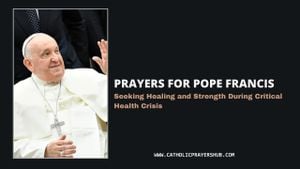Viterbo, the ancient city rich with history and culture, recently took center stage on Italy's national television, showcasing its beauty and significance through two popular Rai programs. The first was Linea Verde Italia, which aired on Rai 1 and was conducted by the charismatic duo Elisa Isoardi and Monica Caradonna. This episode, filmed from February 24 to 27, focused on Italy's excellence linked to innovation and environmental sustainability. Audiences were guided through discussions on decarbonization, circular economy, advanced nuclear technology, and ecological transition.
According to the producers, Linea Verde Italia aims to promote awareness of pressing sustainability issues. The filming's logistical preparations required temporary parking restrictions throughout Viterbo. Notably, the Rai vehicles were granted special parking privileges from February 24 to 27, with designated areas for their use highlighted throughout the city.
Meanwhile, another program, Paesi che vai, aired on Rai 2, delivering viewers a mesmerizing trip through Viterbo's past and its picturesque surroundings. Guided by host Livio Leonardi, audiences were treated to dramatic reenactments, which included actors portraying significant historical figures. Leonardi recounted, “According to legend, Viterbo was founded by Hercules after his victorious battle against giants,” setting the tone for the narrative.
The episode provided insight not only about the city's storied past but also its unique contributions to Italian culture. Famous for being home to numerous popes, Viterbo is affectionately dubbed the 'city of the popes.' The show highlighted the annual celebration dedicated to Saint Rosa, wherein over one hundred men carry the heavy Macchina di Santa Rosa—a UNESCO recognized living heritage of humanity.
Viewers got to explore key landmarks, starting from Piazza San Lorenzo to Piazza San Pellegrino, where episodes of the city's medieval history were brought to life. Leonardi introduced audiences to Pope Alexander IV, stating, “I lived here and moved my papal seat after leaving Rome, which had become unlivable by the end of the 13th century.” Such narrative not only engaged viewers but provided deep insights contrasting the evolution of Viterbo with wider historical events.
Another segment of the show featured the renowned Park of Monsters (Parco dei Mostri) located near Bomarzo. Leonardi described it as “a mysterious and enchanting forest populated by stone monsters, telling the story of great love and its tragic end,” illustrating how art intersects with love and tragedy within the local culture.
The program continued its exploration back to Viterbo, revisiting fascinating tales including the tragic murder of Enrico of Cornovaglia within the Church of Jesus, immortalized by Dante Alighieri’s writings. “This city has witnessed tremendous events, embedding rich narratives within its walls,” Leonardi expressed.
Viterbo’s annual celebration, dedicated to Santa Rosa, was presented with significance, but with minor inaccuracies as archival footage featured the former 'Gloria' Macchina. This prompted comments from Massimo Mecarini, president of the Sodalizio, who reminisced about notable events through the years, including extraordinary transports of the Macchina on visits by Pope John Paul II.
Beyond history and culture, the programs highlighted the artistic beauty of Viterbo, its architectural splendor, and scenic landscapes. Viewers enjoyed virtual tours through the elegant Renaissance geometries of Villa Lante and learned about its famous gardens.
The episodes also featured interviews with Frederico Moccia, the acclaimed writer and director who spoke fondly of his father Giuseppe, known as Pipolo, highlighting his contributions to Italian cinema. “My father had roots here; his work was immortalized within these landscapes,” Moccia noted, acknowledging Viterbo as both personal and cultural territory.
Near the conclusion, the focus shifted to Caprarola, celebrated as one of Lazio’s most stunning locations, famed for its hazelnut production. Leonardi remarked on the local delicacy known as 'Nellina,' quantitatively showcasing how regional culinary artistry thrives to this day.
Finally, the program wrapped up with appreciation from Leonardi, who stated, “Magnificent Viterbo captivated us with its palaces, churches, and evocative medieval atmosphere, born from ancient settlements.” His portrayal effortlessly communicated Viterbo's relentless charm, solidifying its role as not just a city but as cultural and historical fabric within Italian identity.



